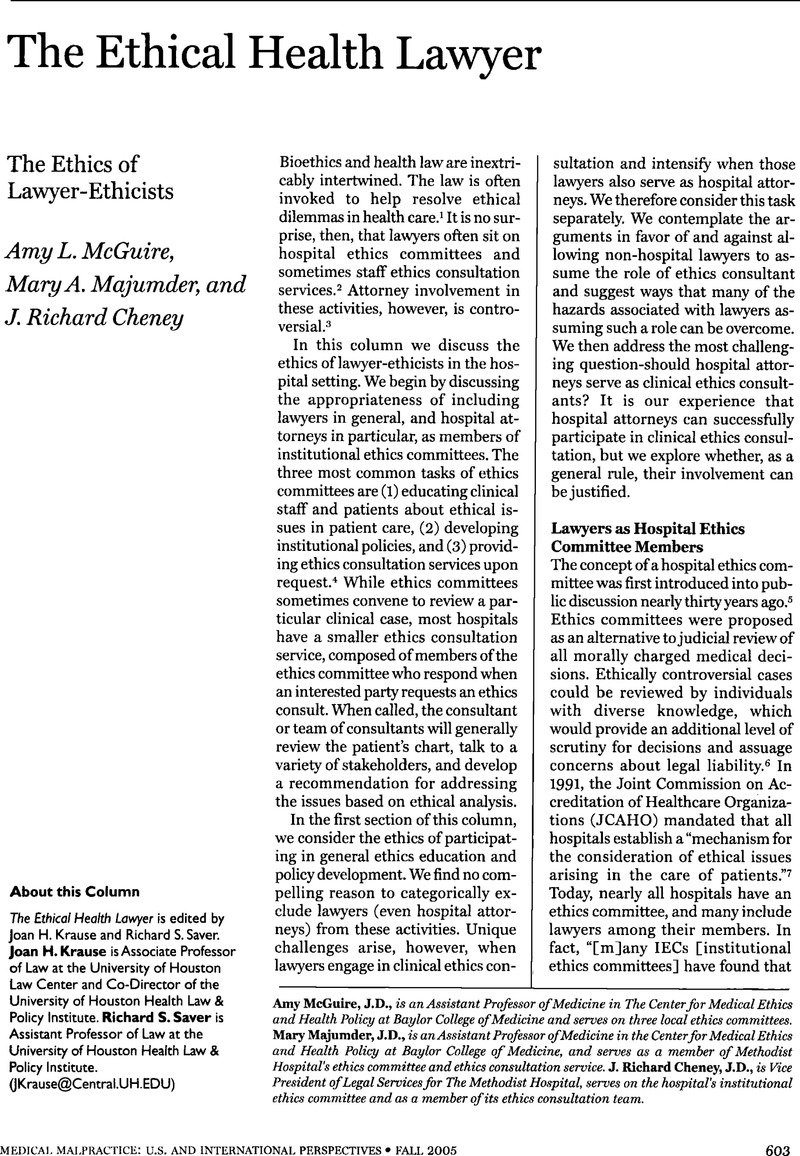Crossref Citations
This article has been cited by the following publications. This list is generated based on data provided by Crossref.
Kapp, Marshall B.
2010.
Teaching Health Law.
Journal of Law, Medicine & Ethics,
Vol. 38,
Issue. 4,
p.
863.
Zaborovskyy, Viktor V.
Stupnyk, Yaroslav V.
Hetsko, Mykhaylo M.
and
Chervko, Pavlo P.
2023.
LEGAL CONFLICTS IN MEDICAL PRACTICE AND METHODS OF THEIR RESOLUTION.
Wiadomości Lekarskie,
Vol. 76,
Issue. 11,
p.
2517.





